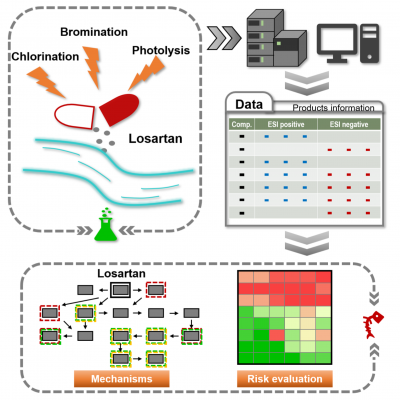Researchers from College of the Environment & Ecology, Xiamen University, et al. have conducted a study entitled “Evaluation of the halogenation and photofate of the blood pressure regulator losartan in water: reactivity and mechanisms”. This study was published in Frontiers of Environmental Science & Engineering, Volume 19, Issue 4.
Chlorinating wastewater before it is released into surface water can change the fate of organic pollutants. This transformation is influenced by chlorine residues, bromine-containing wastewater, and solar radiation. Losartan (LOS), one of the earliest sartan antihypertensive drugs produced, is used worldwide and has been found in the environment. However, its transformation mechanisms and environmental risks have not been systematically investigated. This research presents the degradation kinetics, transformation products, and environmental risks of LOS in different scenarios. The results revealed that kapp, HClO (LOS) ranged from 0.47 to 8.30 L/(mol·s) at pH 5.0–8.0. The kapp, HBrO (LOS) values at pH 5.0–8.0 ranged from 8.38 × 103 to 1.55 × 105 L/(mol·s), revealing a faster bromination reaction than chlorination. LOS degrades through direct photolysis, carbonate radicals (CO3•−), and singlet oxygen (1O2) under sunlight exposure. The solar/chlorination process accelerates the reaction rate through radical activity. In addition, chlorination and bromination resulted in halogen addition to the aromatic ring, whereas hydroxylation, hydrogen abstraction, demethylation, ring opening, and hydrolysis reactions were observed across all processes. Some products exhibit high biodegradation resistance and high toxicity, potentially threatening the aquatic environment. This study aims to enhance our understanding of the environmental behavior and resulting risks of LOS by exploring its environmental fate through various transformation processes.
This study was supported by the National Key R&D Program of China, the Natural Science Foundation of Xiamen (China), and the National Natural Science Foundation of China. For more detailed information, the full paper is available at: https://journal.hep.com.cn/fese/EN/10.1007/s11783-025-1968-9.
